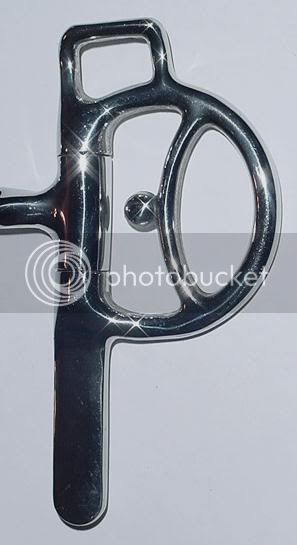cowgurl_up
Well-Known Member
I'm posting this for a friend who can't post pictures. So here is what she sent me!
I want to know if this bit can be used for showing / driving and if so exactly where does the overcheck need to be attached to?
Does the overcheck have to move freely or can it be more 'fixed'? I am thinking the overcheck would 'stick' no matter where you tried to put it...
I am thinking the overcheck needs to be free moving on the cheek ring to work the best...
so much new stuff to learn.........

Thanks all!!!!
I want to know if this bit can be used for showing / driving and if so exactly where does the overcheck need to be attached to?
Does the overcheck have to move freely or can it be more 'fixed'? I am thinking the overcheck would 'stick' no matter where you tried to put it...
I am thinking the overcheck needs to be free moving on the cheek ring to work the best...
so much new stuff to learn.........

Thanks all!!!!



